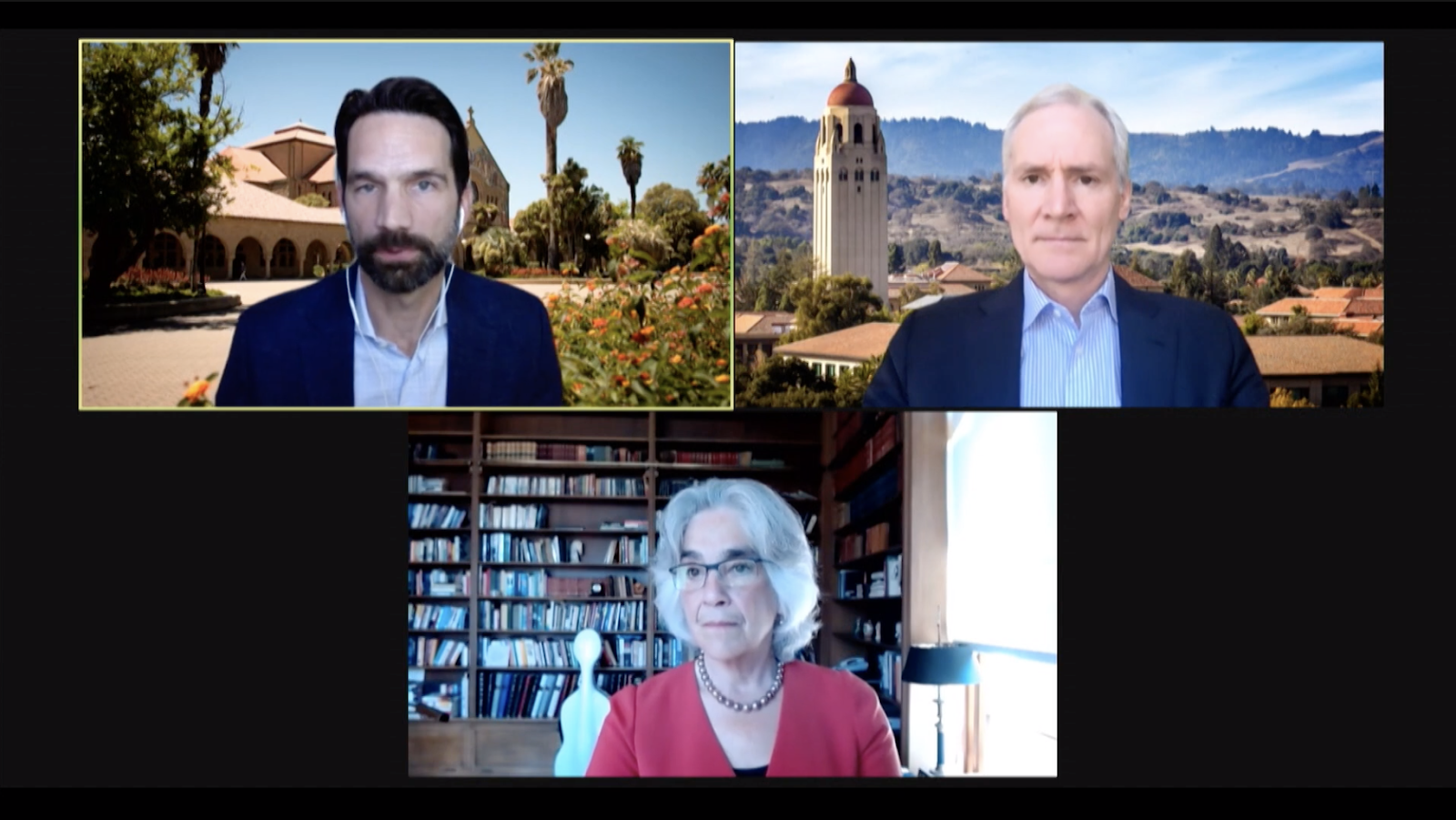After twice scrapping plans to bring undergraduates back to campus, University President Marc Tessier-Lavigne explained Stanford’s decision to allow seniors and juniors to return for the spring quarter during a virtual Family Weekend live Q&A session on Saturday.
Santa Clara County’s recent decisions to loosen COVID-19 restrictions and the University’s adequate amount of housing were key factors in enabling seniors and juniors to return, he said. According to Tessier-Lavigne, the end goal has always been to bring students back.
“I hope everybody realizes that we are as frustrated as you all are, but again at every step our approach has been to support people to come back,” Tessier-Lavigne said.
In response to a question about why graduate students and athletes were prioritized for housing, Tessier-Lavigne pointed out that many graduate students permanently live on campus year round. He also noted that many graduate students are doing research that “can’t be done online at all,” such as laboratory-based or archival research. As for the undergraduate population, Tessier-Lavigne said that student athletes need to be on campus for their sports seasons and that their activity on campus has been extremely constrained.
During the live Q&A session, there were also a number of questions about Stanford’s vaccine plan, including whether students will be able to receive doses.
“Our hope is that everyone will become eligible,” Drell said. “It’s going to take time. At the moment in the state of California, the counties are setting vaccine eligibility and vaccines are provided to healthcare providers, so we’re not given our own supply of vaccines.”
As California has expanded eligibility, Drell believes that resident assistants may be able to receive vaccines. Otherwise, it is unclear when the general student body will be able to receive their first doses.
Parents also asked why Stanford has not reduced tuition during its online school year. According to Drell, many of Stanford’s costs are much higher during the pandemic, keeping the University from lowering tuition. However, she did not elaborate on what these costs were. Drell also noted that Stanford plans on raising the boundary for financial aid next year from $65,000 to $75,000 and that regardless of tuition, “the value of the Stanford degree is going to be undiminished when our students graduate.”
On the subject of Stanford’s handling of COVID-19 compared to peer institutions, Drell pointed out that many other universities have different living situations.
“Many of our graduate students live on our campus, and so there actually have been a lot of students on the Stanford campus, but our housing stock and county rules have made it hard for undergraduates,” Drell said. She also emphasized that one “really has to look into the details” before making any comparisons between colleges.
Drell also expressed hope that the entire undergraduate population will be able to return to campus in the fall. She noted, however, that some instruction will have to remain online and that all in-person classes will likely require students to wear masks.
“Masks in classrooms may be with us for a while, and testing will be with us for a while,” she said. “We are certainly planning a robust testing process that will be with us through the fall at least.”
